contact me
Hi! I'm Lindsay Ferrier. You might remember me from a blog called Suburban Turmoil. Well, a lot has changed since I started that blog in 2005. My kids grew up, I got a divorce, and I finally left the suburbs for the heart of Nashville, where I feel like I truly belong. I have no idea what the future will hold and you know what? I'm okay with that. Thrilled, actually. It was time for something totally different.
Your Complete Guide to Rugby: Tennessee’s Best-Kept Secret
December 28, 2016
Here’s everything (and I do mean EVERYTHING) you need to know about visiting Rugby, Tennessee, a perfectly preserved Victorian village nestled in the forests of the Cumberland Plateau. For a more concise overview of Rugby, check out my companion post on Style Blueprint!
Rugby, Tennessee isn’t all that far from Nashville in theory– Make the 2 1/2 hour drive east, though, and the minutes will seem to unravel into hours as you wind your way through the rocky forests and fields of the Cumberland Plateau. On our last trip, we drove past tidy mobile homes and tumbledown barns, weed-choked fields dotted with goats and scores of country churches built to suit every variety of Baptist, hand-lettered signs warning us against the dangers of alcohol and oversized logging trucks headed in the opposite direction, each driver lifting a few fingers from the wheel in greeting as he rumbled past. And we slowed down as we motored past the home of a man who’d fallen asleep in the plastic chair he’d placed out front to watch the cars go by — We didn’t want to wake him up.
Just as we became absolutely certain we’d reached the exact middle of nowhere, a big sign appeared: Welcome to Historic Rugby. Seeing it, I couldn’t help but grin — This marked our third journey to one of the nation’s strangest and most fascinating secrets. Rugby has captured my imagination and my heart. It’ll claim yours, too, if you give it a couple of days.
At first, Rugby may not look like much — a dozen or so old-fashioned homes and storefronts breaking up the monotony of the Plateau’s endless rolling hills. Start poking around, though, and it soon becomes clear there’s far more to this tiny town than first meets the eye. When you arrive, plan to make the ‘Historic Rugby Visitor Centre‘ your very first stop. (Oh, and be sure and grab guides there for the Gentlemen’s Swimming Hole and Massengale Loop trails. You’ll need them later.)
Many historic towns offer walking tours to help visitors learn more about their surroundings, but Rugby’s tour is crucial to understanding what’s here– and to getting a peek inside its historic structures. Tours are offered several times a week depending on the season (be sure and check the website for the latest schedule) and each one begins with a short film that offers an overview of Rugby’s unique history.
The village was founded back in 1880 by Thomas Hughes, a well-known social reformer in England and author of the popular book, Tom Brown’s School Days. Inspired by the writings of Ralph Waldo Emerson, Hughes envisioned a utopia for England’s ‘second sons,’ men who’d grown up in wealthy British families but were doomed to inherit nothing because of their birth order. Hughes hoped Rugby could offer these men a chance to leave British class distinctions behind by creating a cooperative agrarian community in a particularly scenic area of rural Tennessee. Rugby colonists were promised an opportunity to live off the land as gentleman farmers while still enjoying the culture and comforts to which their class was accustomed, and it was an offer some found irresistible. Within the first year, a number of new families arrived and a large hotel, three boarding houses, a commissary and several private homes were constructed, along with tennis and croquet courts and a walkway to a popular picnic spot by the river.
The Rugby experiment fascinated Brits and Americans alike and was covered in newspapers and magazines on both sides of the pond. And at first, it seemed that the colony had gotten off to an excellent start; archery, drama, baseball and equestrian clubs were established, as well as a town newspaper that boasted an Oxford grad as its editor. In the center of town, the ornate Tabard Inn served as the colony’s social center and attracted wealthy tourists from across the region. But in 1881, the colony suffered its first severe setback when typhoid fever from the inn’s well killed two hotel guests and five colonists — including the newspaper editor.
In 1882, The Tabard Inn reopened after a thorough cleansing and the colony rebounded. A library was built and British and American publishers helped stock it with donated books. By 1884, the colony had 400 residents and between 65 and 70 Victorian structures, including a church, school, sawmill and cannery. Unfortunately, the colony’s troubles continued.
The magnificent Tabard Inn burned to the ground. Lawsuits and land disputes prevented colonists from owning the land they’d come to claim. A series of unusually severe winters disheartened Rugby’s new residents. Beyond circumstantial problems, it turned out the colonists were ill-suited for the pioneer life and either unwilling or unable to sustain their agrarian utopia. A cannery failed. A dairy failed. A sheep-raising endeavor failed. Pottery and brick-making efforts failed. Finally, in 1887, Thomas Hughes’s mother, a central figure of Rugby life, died, and by then, most of the colonists decided they’d had enough. Many returned to England or moved elsewhere in the states. Thomas Hughes, who’d never managed to convince his family to move permanently to Rugby and only spent a couple of months there each year, left for the last time in 1887, never to return.
Hughes’ utopian experiment had failed, and while a few families stayed on and maintained what they could over the ensuing decades, most of the beautiful Victorian structures fell into ruin and were eventually torn down. It wasn’t until the 1970s that historic preservationists managed to secure a spot for Rugby and several of its Victorian-era structures on the National Register of Historic Places, and work began in earnest to restore and preserve what was left of the colony.
Today, only 67 people live in Rugby but the remaining structures from the colony’s heyday are meticulously maintained, right down to pieces of original furniture, housewares, photographs and letters from the colonists who once lived there. On our tour of the village, we followed our guide first to Kingstone Lisle, the Victorian-Gothic home built for Thomas Hughes by New York architect Cornelius Onderdonk, who designed many of Rugby’s structures.
Kingstone Lisle is also furnished with furniture and china that belonged to Hughes’ mother, Margaret. She moved to the colony in 1881 when she was 83, along with her granddaughter and Thomas Hughes’ niece, Emily Hughes.
Margaret was well connected in England and counted Alfred Tennyson and Charles Dickens among her many friends. Despite her advanced age, once she arrived in Rugby she became the hub of its social wheel, hosting gatherings and making connections between the colonists right up until her death in 1887.
A number of her things can still be found inside Kingstone Lisle, including this container of spices she brought with her from England.
Next on the tour is Christ Episcopal Church. Built with native poplar, pine and walnut by Cornelius Onderdonk in the Carpenter Gothic style, it’s virtually unchanged from the time it was constructed, and weekly services have been held here since the 1880s.
Inside, you’ll find a 1849 harmonium reed organ, brought from England by Reverend Joseph Blacklock, Rugby’s first priest. It was used in services until the early 1980s, when it stopped working — At the time, it was believed to be the oldest organ of its kind still in use in the United States. The original walnut baptismal font is still in use and was carved by Henry Fry, a friend of Thomas Hughes who also once carved a throne for Queen Victoria. The buttermilk-based dark red paint and green trim in the apse is original to the structure and hardly faded by time. The hanging lamps, electrified in the 1950s, were brought over from England by a Rugby family in the early 1880s.
While you’re inside, note the number of times design elements appear in threes. You’ll see three beams overhead, three panes of glass at the top of each window, and fleur-de-lis stenciled in the apse, each with three petals. All are meant to represent the Holy Trinity.
Outside, take note the large tree just inside the gate. It’s actually not a tree at all, but a shrub! Planted over a hundred years ago, it was never pruned. Today, it looms over the tiny church.
Next up is what has to be one of the most amazing historic sites in the nation — The Hughes Public Library. Step inside and you’ll immediately be transported 135 years back in time.
This library looks almost exactly as it did when it was built back in 1882 — In fact, it’s the oldest public lending library in the South. You’ll find thousands of books here and more than 1,000 periodicals, all published before 1899.
Books range from children’s literature to volumes on agriculture and architecture, and many are first editions. Believe it or not, only seven books are missing from the original 7,000 donated to this library when it opened.
Visitors are still welcome to look at the books and magazines, so long as you’re willing to wear a pair of the library’s cotton gloves. There’s no electricity, heating or air, so plan accordingly!
The tour ends at the schoolhouse, built in 1907 after the original schoolhouse burned down, and used by the remaining villagers until the mid-century. The first floor of the school has been turned into a museum, filled with photographs, newspaper accounts and artifacts from the original colonists.
While you’re looking around the town, you’ll also want to stop by the Rugby Printing Works, which is open on weekends. Although the original printing works no longer stands, this 1887 building was brought over from nearby Deer Lodge and contains a working printing press, which volunteers use to demonstrate the art of printing during the Victorian era.
You’ll leave with a few printed souvenirs of your own — Choose from greeting cards, authentic Rugby recipes, and clever handbills, all of which were printed on site.
If you really want to immerse yourself in Victorian Rugby, follow up the tour with a night or two at Rugby’s Newbury House. This is a photograph of the house in the 1880s. It hasn’t changed much at all since then.
See what I mean?
Built in 1880, the Newbury House was Rugby’s first boarding house and provided lodging for a number of Rugby’s colonists before their own homes were built. In 1883, the Dyer family took over operations — They were Margaret Hughes’ longtime servants from England, who’d come to Rugby with her and continued working for her for two years in exchange for their passage to the United States. The Newbury House was another hub of social activity and was said to have better meals than the famed Tabard Inn across the street. Thomas Hughes hosted several dinners here while he was in town.
Another family took over the boarding house in the late 1880s and kept it going until the 1920s — By the 1950s, it was abandoned. Historic Rugby eventually bought the property and reopened it in 1985 as a bed and breakfast.
Today, you can spend the night here for as little as $69. Come on a weeknight or during the winter months and you’re likely to have the whole house to yourself. We spent a weekend here in early November and were the sole guests, which meant the parlor (with a working gas fireplace) and full kitchen were all ours.
The kids loved this cheery sun room off the kitchen, where they spent time reading books and playing games. They can’t wait to stay at the Newbury House again.
On this particular trip, my daughter and I stayed in what’s probably the Newbury House’s most famous room- the Charles Oldfield room, which is said to be one of the most haunted hotel rooms in the country!
I’ve gotten to know Charles Oldfield quite well over the years — I’m pretty sure he broke my foot several years ago, although that’s another story for another time. The truth is, the more I’ve learned about Charles, the sorrier I’ve felt for him. He came to Rugby in the 1880s as an inspector for the colony’s board of directors in England and lived at the Newbury House while he was visiting. Oldfield loved the place and wanted to stay- He convinced his wife and son to join him, but got sick while they were on their way over and died the night before his son arrived at the colony. Oldfield is now believed to haunt the Newbury House, along with an odd assortment of other spirits that range from a little girl to a murderer from the Tabard Inn.
For those who are afraid of ghosts, don’t worry — We slept two nights in Charles Oldfield’s bed and were very comfortable! If he is indeed haunting the Newbury House, he is certainly a friendly ghost (broken foot aside).
You won’t find many shopping opportunities in Rugby, but what they do have is worth checking out. The Spirit of Red Hill has a carefully curated selection of local arts and crafts, vintage and antique goods, and other ‘oddiments,’ as its artisan proprietors call them.
The shop is inside the newly reconstructed Alexander-Perrigo House, a recreation of the boarding house that originally stood on this site in the 1890s. You can also spend the night here — One room is available to guests and rates are very reasonable.
Across the street, you’ll find The Commissary, another reconstructed building that closely resembles Rugby’s original commissary– a pivotal structure for the Victorian colonists.
In addition to arts and crafts from dozens of local artisans, the Commissary boasts furnishings from the colony’s heyday.
We especially loved the basket of children’s marbles from the 1850s found in the ruins of a nearby factory. Many are hand-painted with tiny flowers, and at $1.98 per marble, even your youngest collector can afford to claim a little piece of history as their own.
Hungry? The Harrow Road Cafe isn’t just your best option in historic Rugby, it’s your only option! It serves breakfast, lunch and dinner when it’s open — The schedule varies according to the season. (If you’re staying at the Newbury House, you’ll want to keep the limited restaurant options in mind and consider making liberal use of the boarding house’s full kitchen.) We loved being able to walk to dinner at the cafe each night (The closest other restaurants are 25 minutes away!) and we really loved the cafe’s breads and desserts. If Dutch Apple Pie is on the menu, you’ll definitely want a slice — It’s made by a server named Donna and is phenomenal topped with a scoop of vanilla ice cream. A local named Mary makes all the rest of the desserts, as well as the cafe’s breads and biscuits. When you order, ask for bread that’s right out of the oven — You’ll be glad you did! We also loved Mary’s Peanut Butter Pie – It’s the best I’ve ever tasted.
Another fantastic option for breakfast and lunch is the R.M. Brooks General Store, located about a mile away from Rugby’s historic town center. This general store has been here since 1917 and it appears to be virtually unchanged from the time it opened. A pot-bellied stove in the center of the room provides warmth as well as a place for locals to gather and exchange gossip, and the entire store is filled with memorabilia saved by the five generations of Brookses who’ve run the place, from hundred-year-old bills of sale to ancient Indian artifacts to hornets’ nests! Look for Bobby Brooks while you’re there — He’ll be happy to tell you all about the area and answer questions about the store itself.
If Linda Brooks’ famous fried pies haven’t sold out by the time you visit, snatch them up while they’re still hot- She brings them in from Grey Gables, her popular bed & breakfast down the road where she also makes breakfast for her guests and four-course gourmet dinners! Linda’s daughter, Tiffany, runs the kitchen and is said to make the best fried bologna sandwich in the state. We had one the afternoon we arrived and liked it so much, we came back the next day for more. Be sure and get your sandwich topped with a slice of hoop cheese, made by members of the Muddy Pond Mennonite community down the road.
Once your belly is full, grab that Gentlemen’s Swimming Hole Trail guide you picked up from the Visitor Centre and head down Laurel Dale Road — It dead-ends at the historic Laurel Dale Cemetery and the trailhead for the Gentlemen’s Swimming Hole, which has to be one of the most beautiful short hikes in all of Tennessee.
Stop first at the cemetery — It really drives home all you’ve learned about Rugby. You’ll quickly find Margaret Hughes’ ornate grave and be reminded of how beloved she was by the colonists. You’ll also come across the graves of the typhoid fever victims, as well as countless children of the colonists — a tragic reminder of how hard times really were for families at the turn of the century.
You’ll find several reminders’ of the colonists’ stately origins. I was so intrigued by this marker — Imagine your house being the thing that’s placed on your gravestone when you die — not your kindness or your compassion or military service. Your. House. Wow.
You totally wanted to see that ‘stone house’ in Rugelby, England, didn’t you? You’re in luck — I found a picture of it on the Internet.
Our cemetery visit definitely left an impression on all of us.
If you want a more in depth experience at the cemetery, pick up an AcoustiGuide audio tour from the Visitor Centre before you come — Tours are available for purchase for just a few dollars.
Directly across from the cemetery, you’ll find the trailhead for Gentlemen’s Swimming Hole. This short, .4 mile trail is a must-do experience while you’re in Rugby.
It’s no wonder this trail was so popular with the Rugby colonists- It immediately descends into the Clear Fork River Gorge, winding through lovely mature forest festooned with mountain laurel and anchored with many large boulders.
One of the first things colonists did when they came to Rugby was build this walkway down to the Clear Fork River. Trodding this well-worn trail, it’s easy to imagine you’re hearing echoes of the young men and women who walked this path more than a hundred years ago, carrying picnic baskets, books and musical instruments.
Once you get to the bottom of the gorge, fork left at the sign and continue on the short distance to the swimming hole.
At the trail’s end, you’ll find an impossibly clear expanse of water that you’re welcome to take a dip in, whether you’re a gentleman or a lady. Congratulations. You can now say you’ve swum in the oldest continuously-used swimming hole in the United States.
Once you’ve had your fill of the watering hole, either retrace your steps back to the top of the trailhead or continue on at the fork for nearly a mile to Meeting of the Waters, where the White Oak Creek and Clear Fork River meet. This was the location for the Ladies’ Swimming Hole. When you reach Meeting of the Waters, the trail climbs back up the gorge along an old, unused road and returns you back to the trailhead where you started.
Another lovely walk can be found at the Rugby State Natural Area, 667 acres of land adjacent to Historic Rugby. The Massengale Loop is a 1.2 mile trail through a thicket of oak, tulip poplar and maple trees up to the Massengale Homestead, which was built by an Appalachian family in the 1860s and predates the Rugby colonists.
Buy an AcoustiGuide audio tour for the trail at the Visitor Centre before your hike or pick up a free interpretive trail guide — or simply read the story of the Massengale family at the kiosks you’ll find at the bottom and top of the trail. You’ll learn about the families on the Cumberland Plateau who managed to do what the Rugby Colonists could not– live almost entirely off the land.
Although all that remains of the homestead itself is a pile of rocks that were once part of a chimney, the many photos on display at the kiosks help you visualize what life was like for the Massengale family, Appalachians who were able to weave their own cloth from sheep’s wool, make enough honey and butter to sell to nearby miners, and create a working terrace farm with orchards and pastureland that could sustain them.
Outside of Rugby, seasoned hikers won’t want to miss the Big South Fork National River and Recreation Area, which is a fairly short drive away and filled with trails for all ages and abilities. Check out the National Park Service’s list of some of the most popular hikes in the park — Many only take an hour or two.
Another way to see this national treasure is to drive to the Big South Fork Scenic Railway in Stearns, Kentucky. Bring a picnic lunch with you and board the historic train, for a 2 1/2-hour ride deep into the forest and back. You’ll pass through what’s left of one abandoned mining camp and stop at another to learn about its history at interpretive kiosks.
While the train is stopped, be sure and walk up to the nearby bridge for this spectacular view of the river.
Perhaps you can understand now why we can’t get enough of Rugby, a gem in the wilderness whose long dead settlers feel more present, somehow, than the living. Thomas Hughes’ original plans for an Appalachian utopia may have failed, but I have a feeling he’d be deeply gratified to know that 135 years later, his Rugby would still stand, offering sanctuary to those seeking an escape to the plagues of modern society.
Keep up with us by following Suburban Turmoil on Facebook Instagram, Twitter and Pinterest!
All historic photos in this post used courtesy of Historic Rugby.
Leave a Reply Cancel reply
This site uses Akismet to reduce spam. Learn how your comment data is processed.
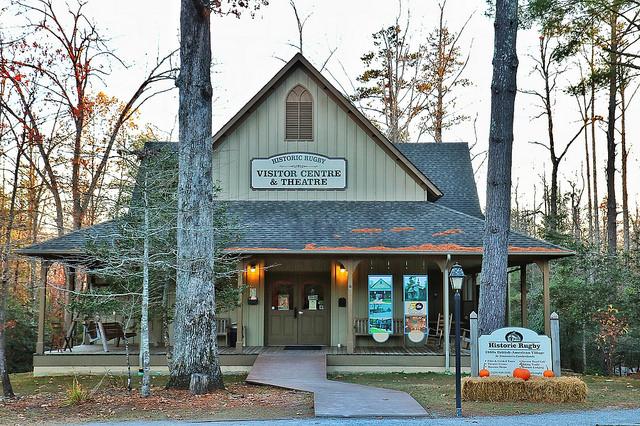
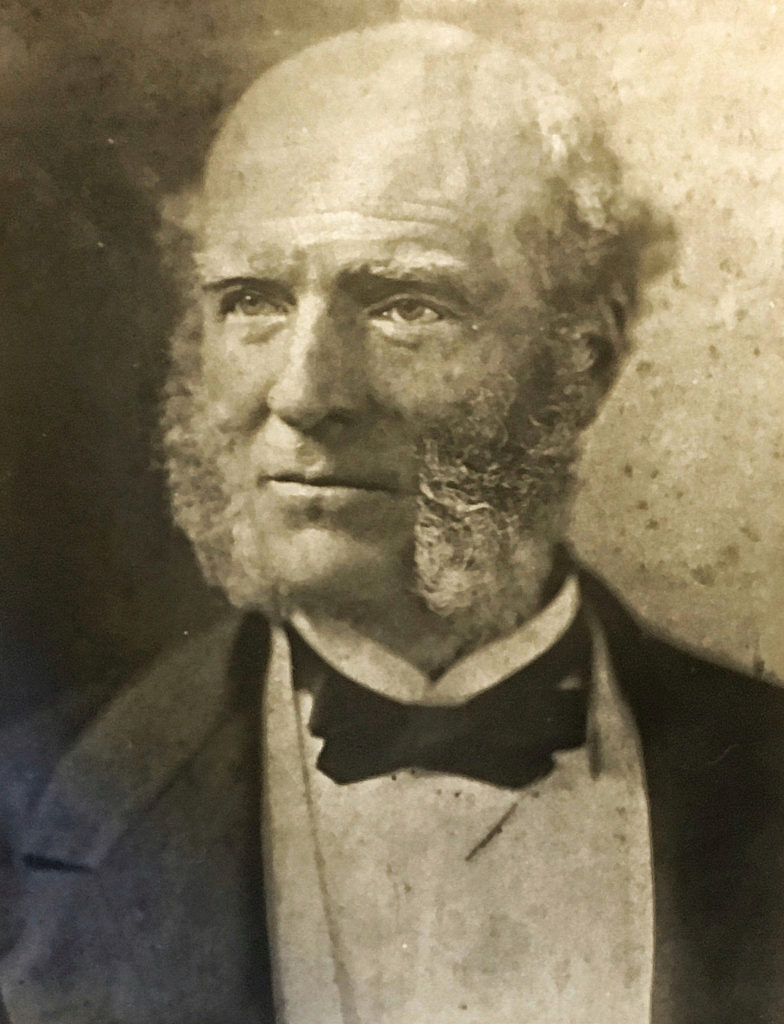
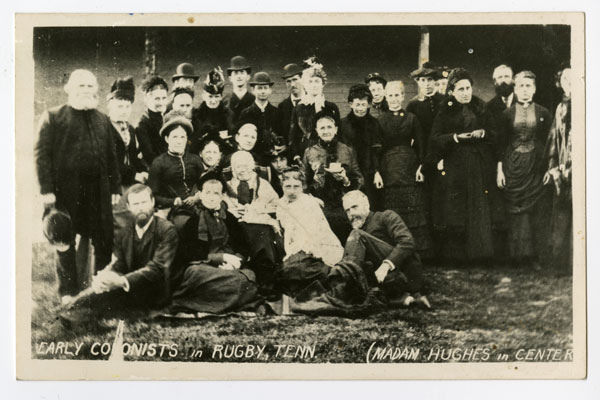
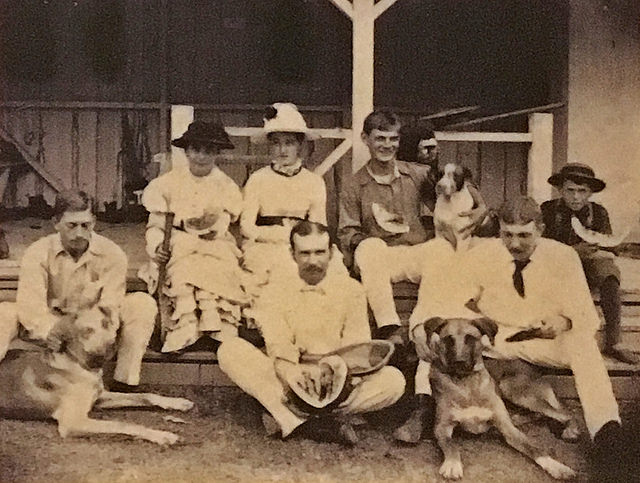
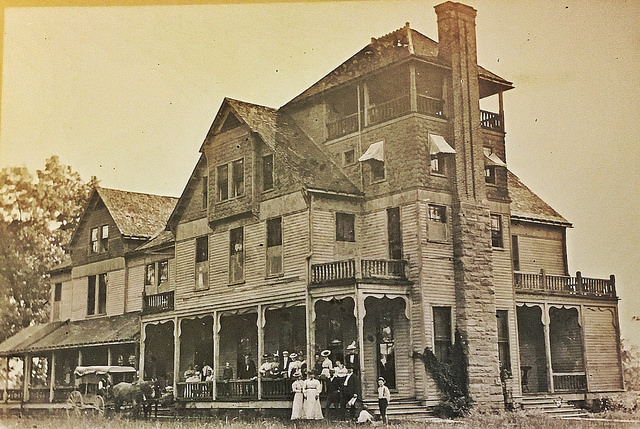
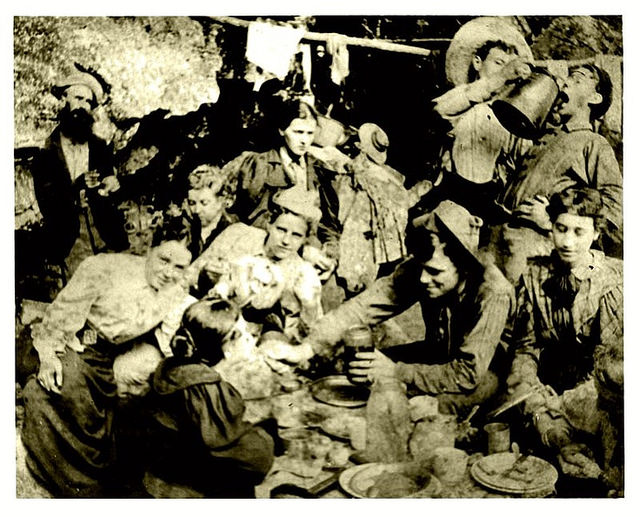
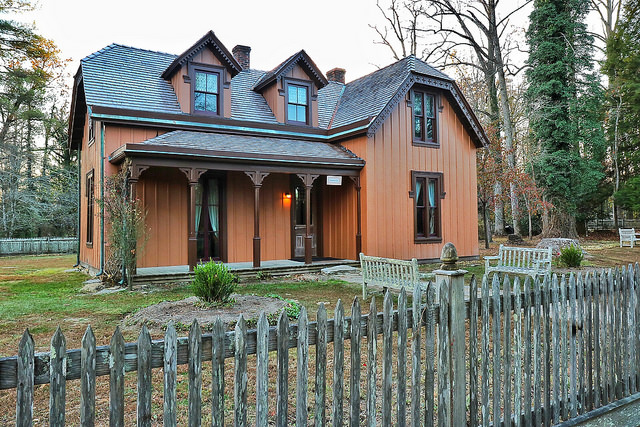
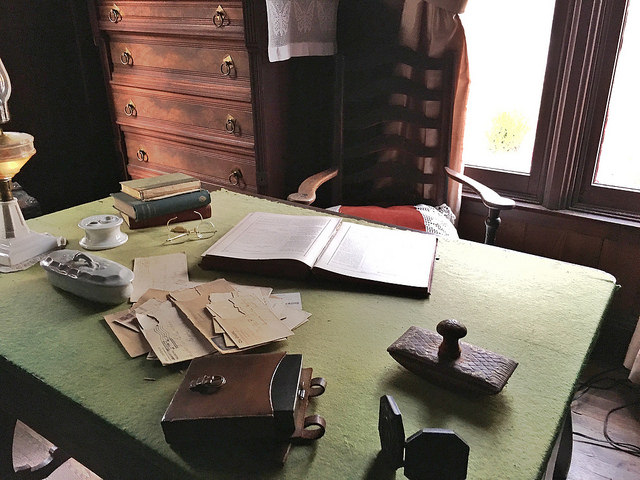
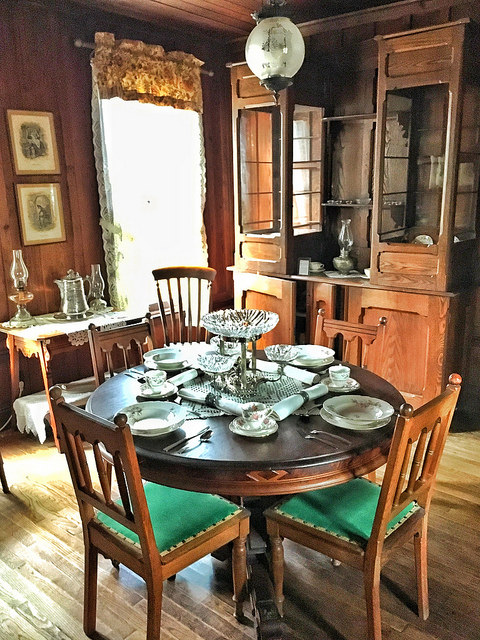
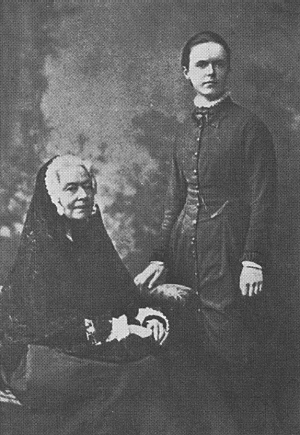
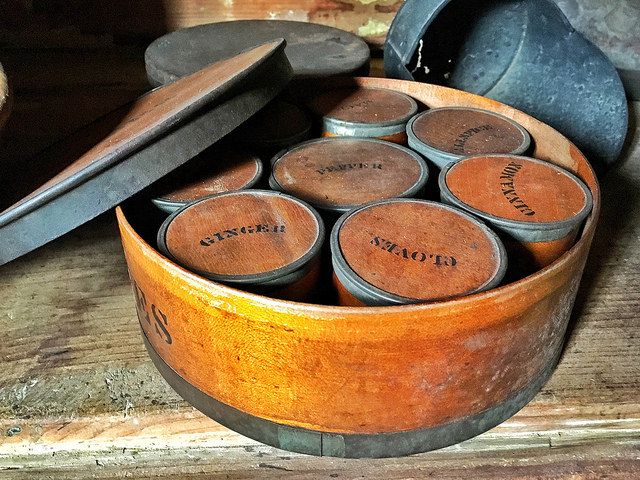
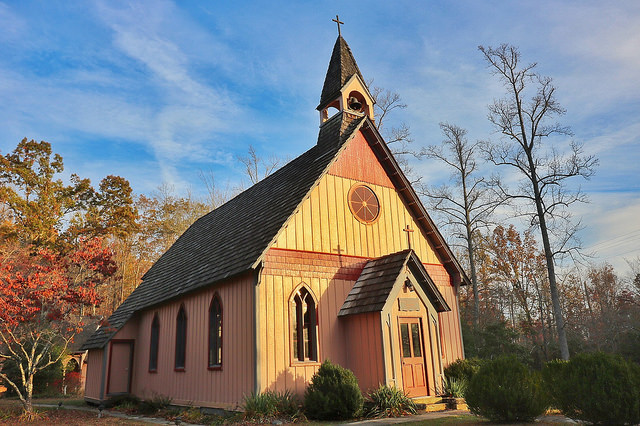
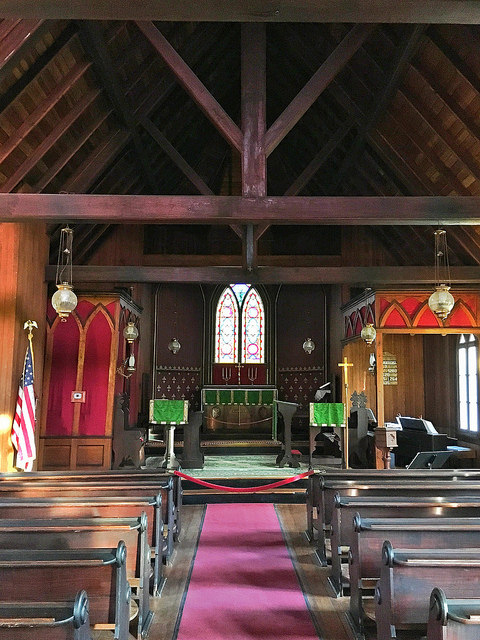
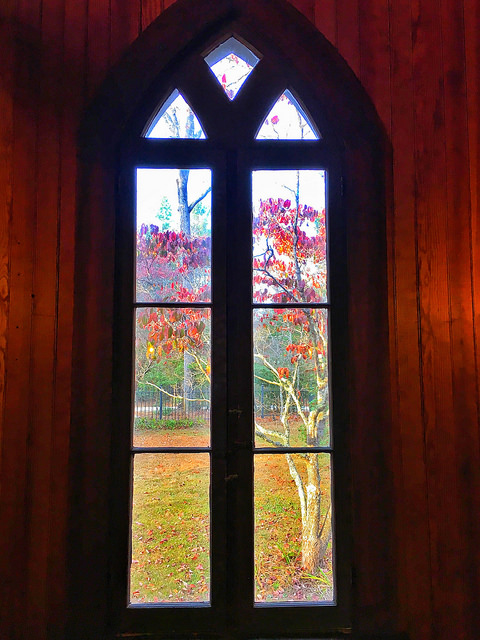
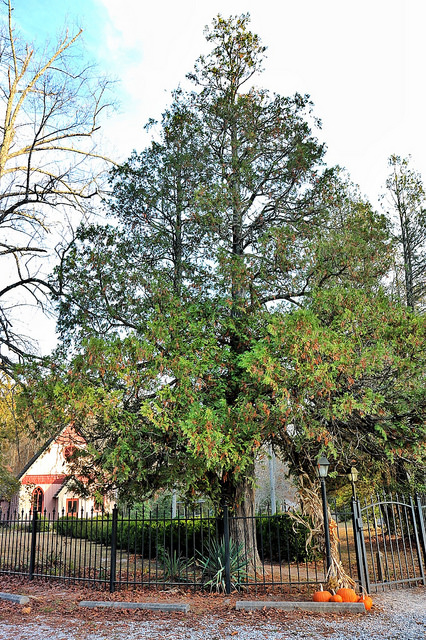
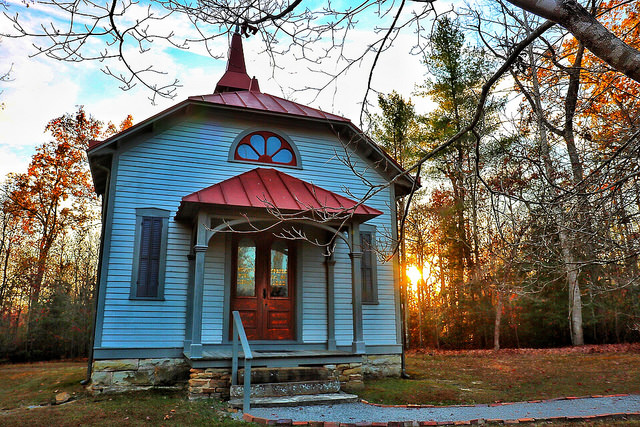

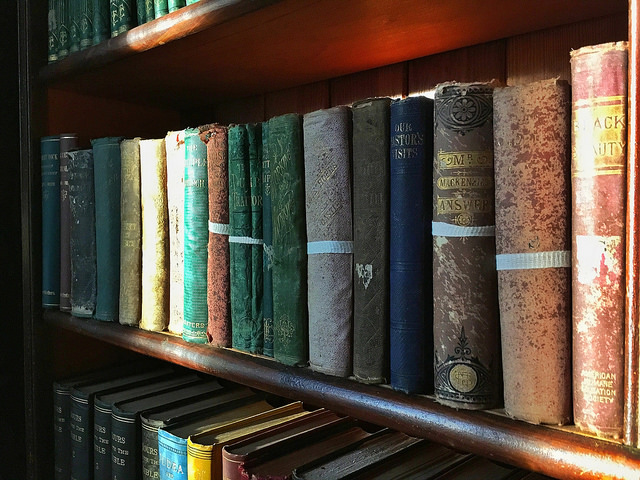

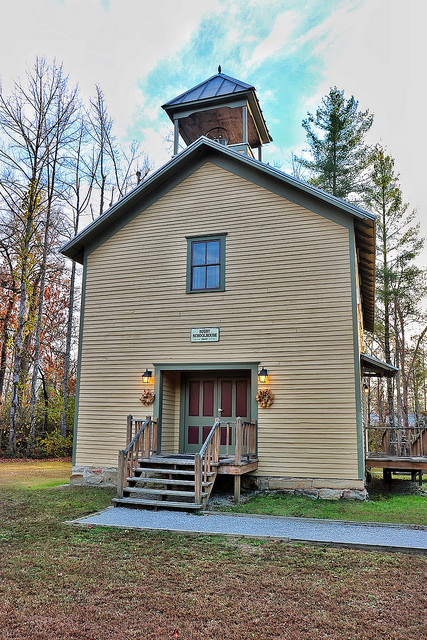
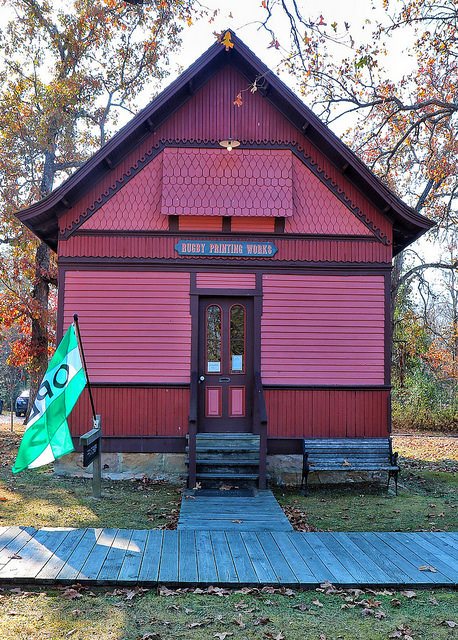
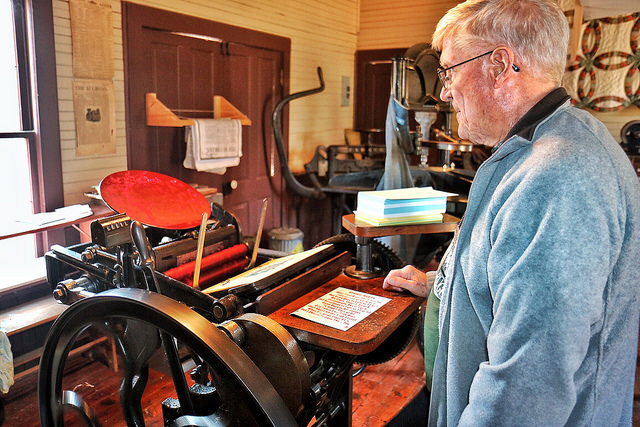
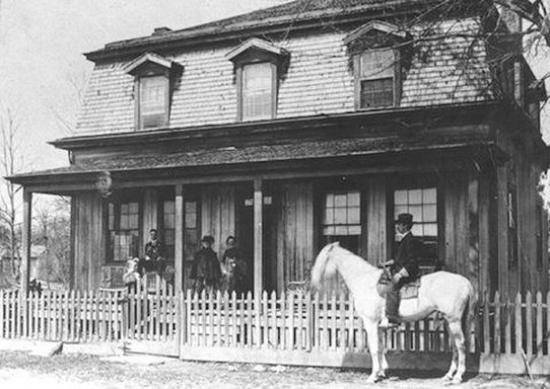
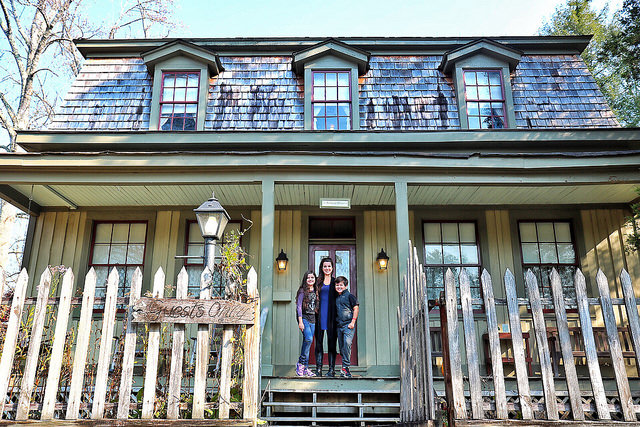
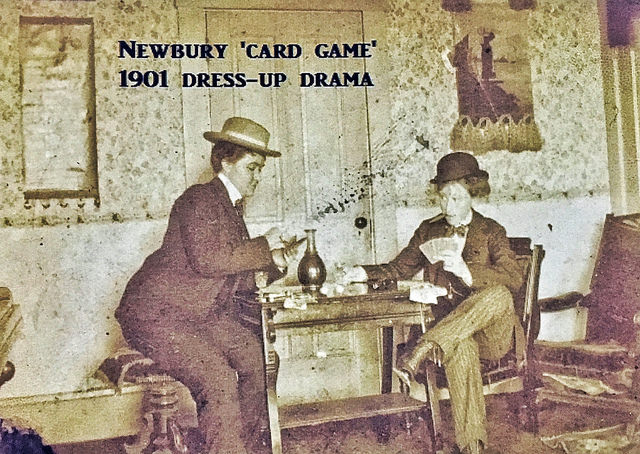
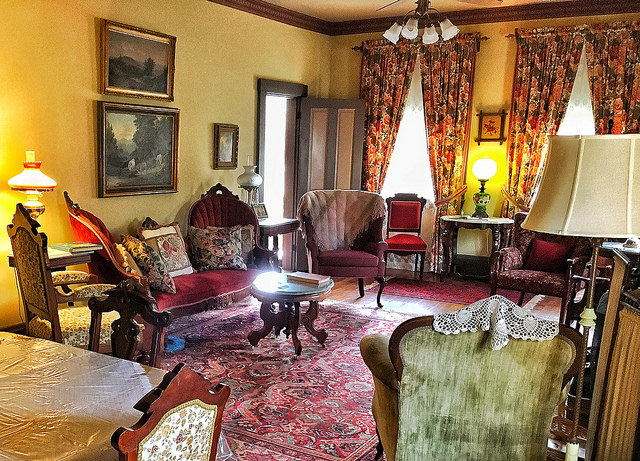
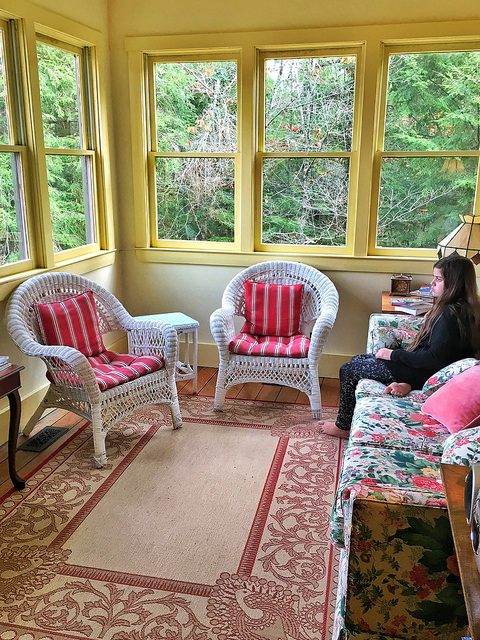
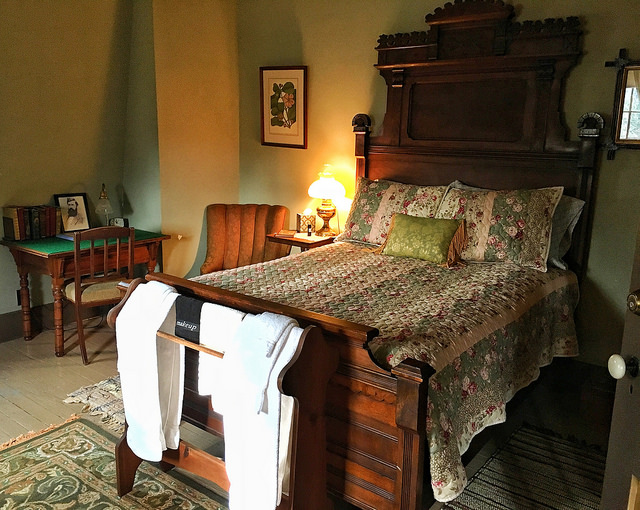

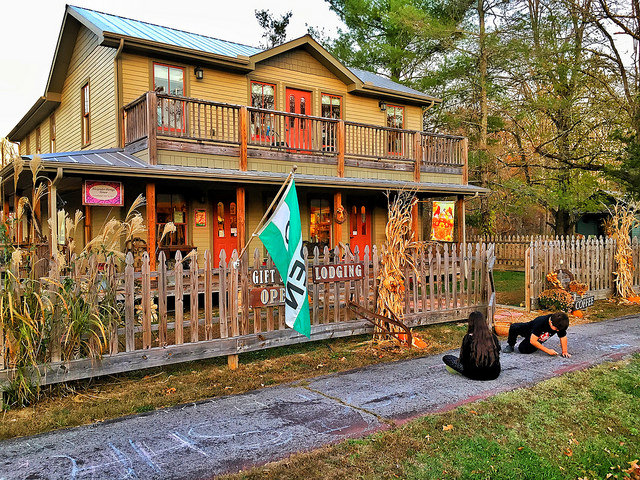
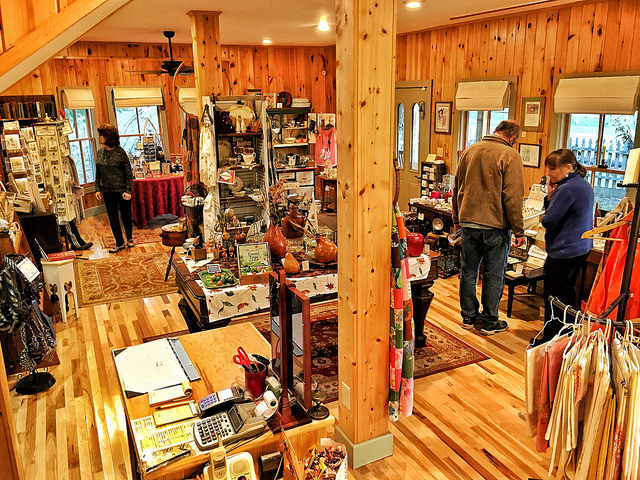
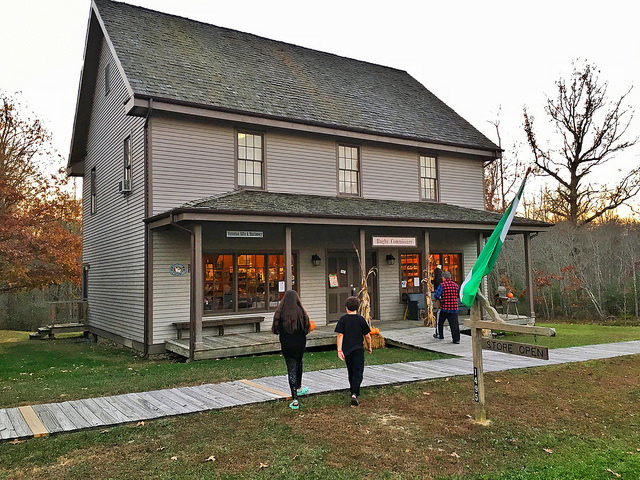
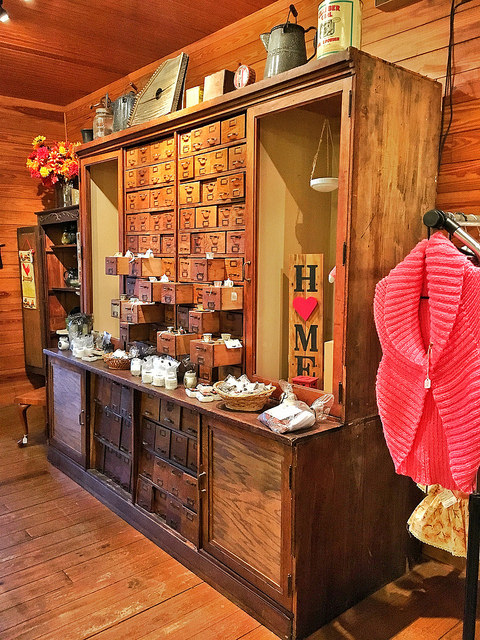
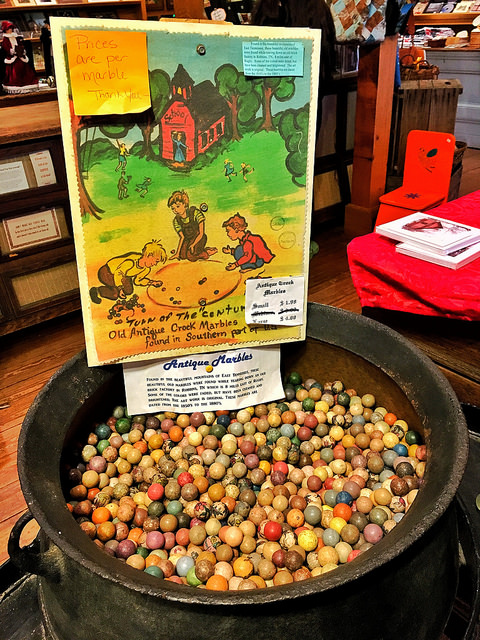
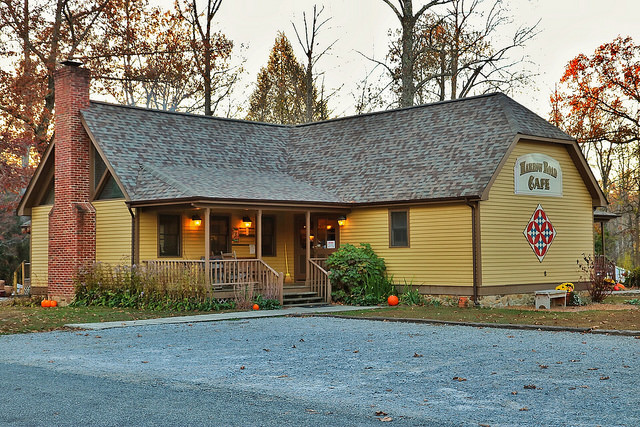
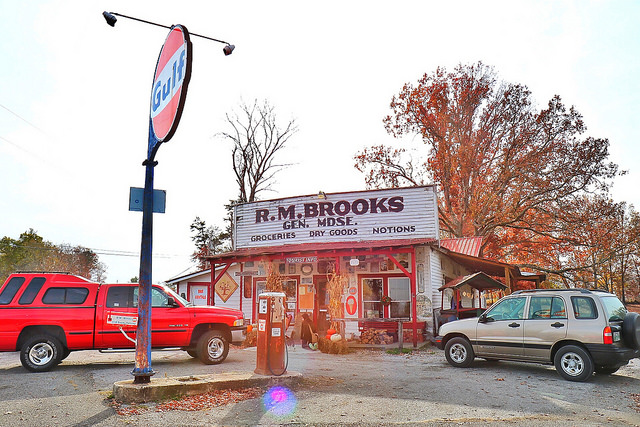
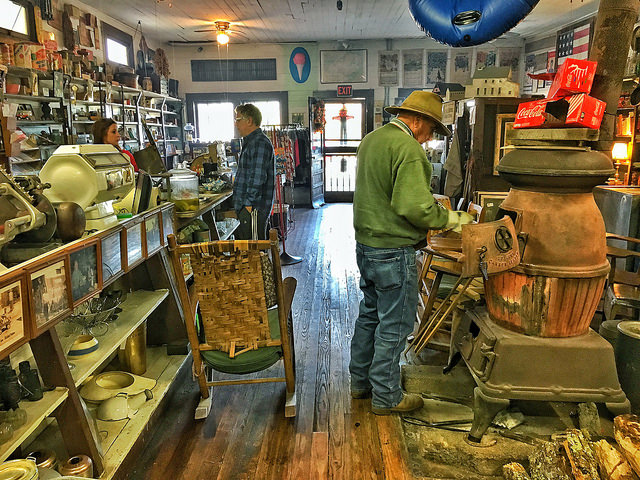
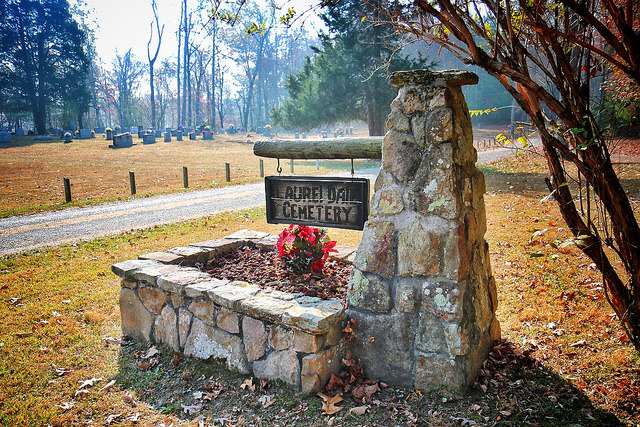
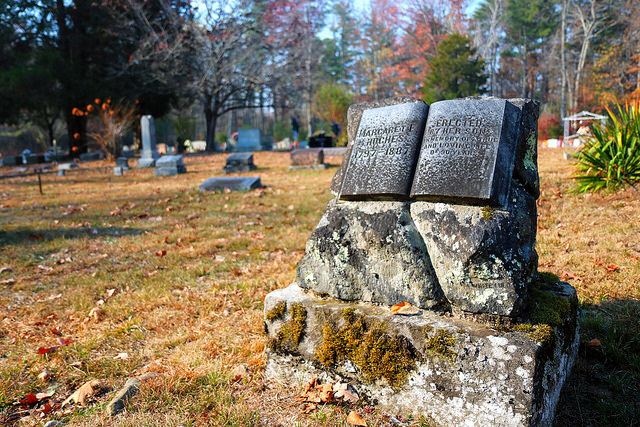
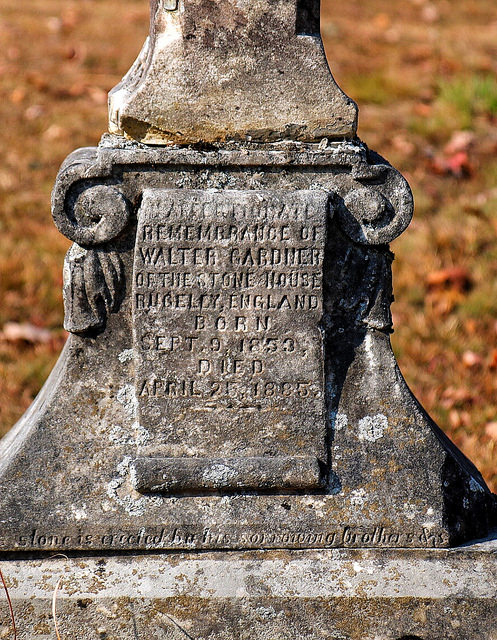
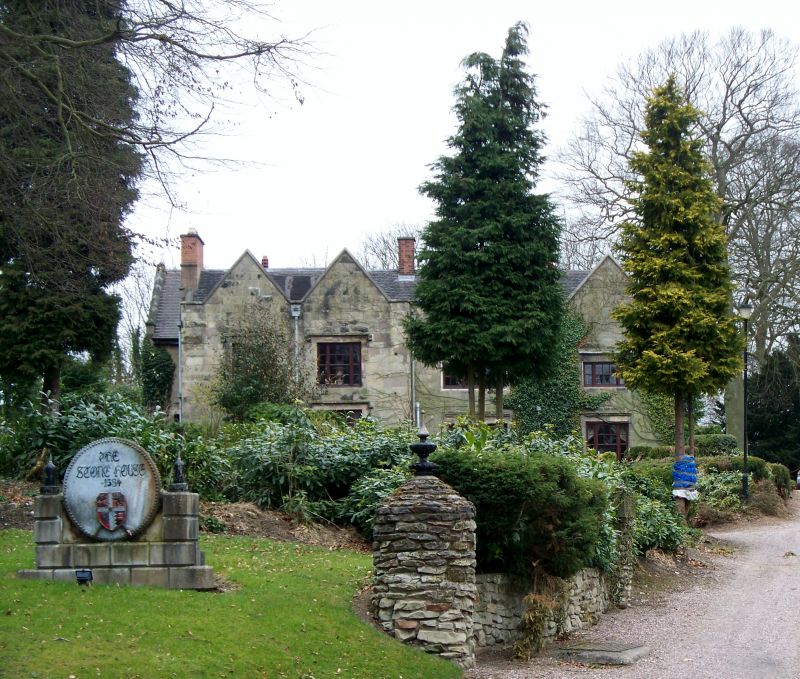
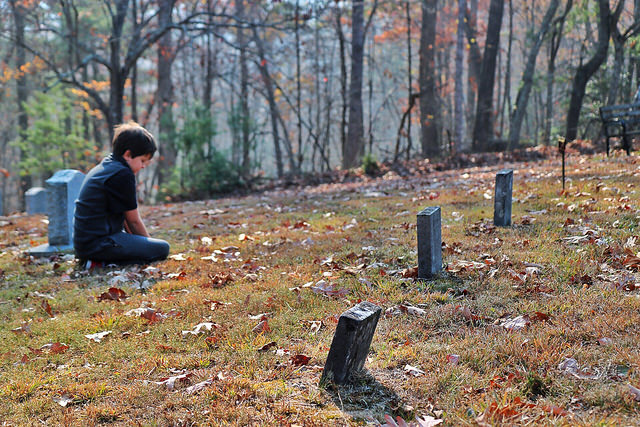
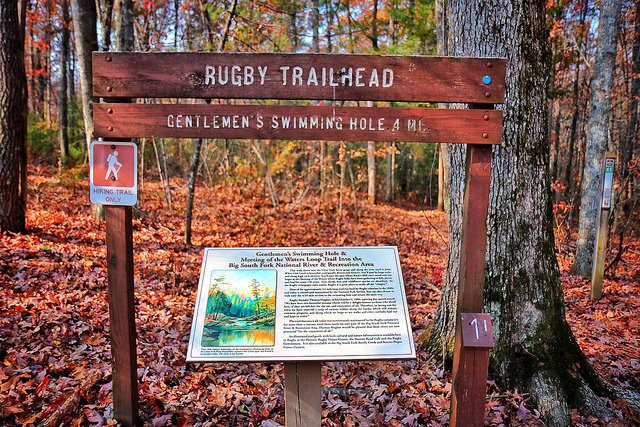
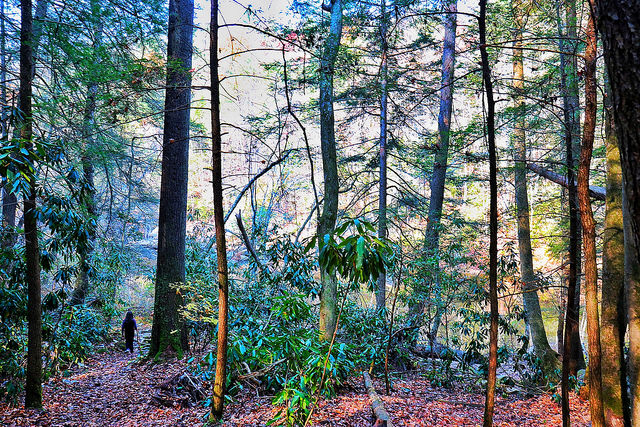
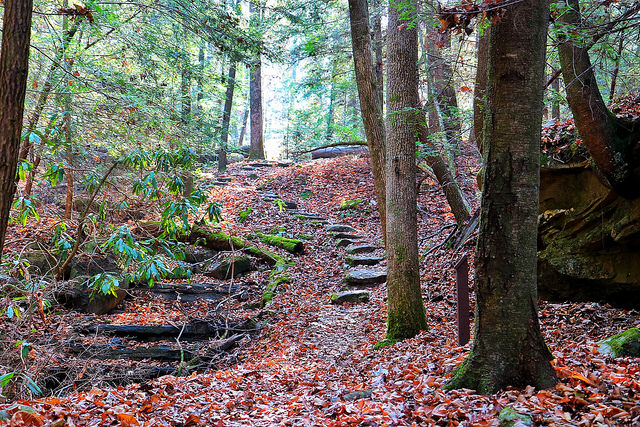
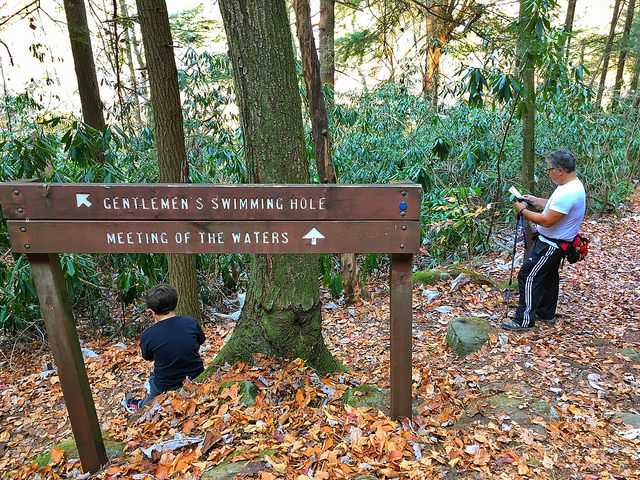
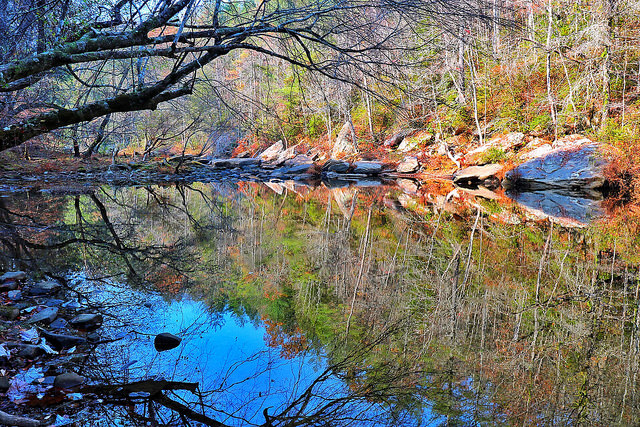
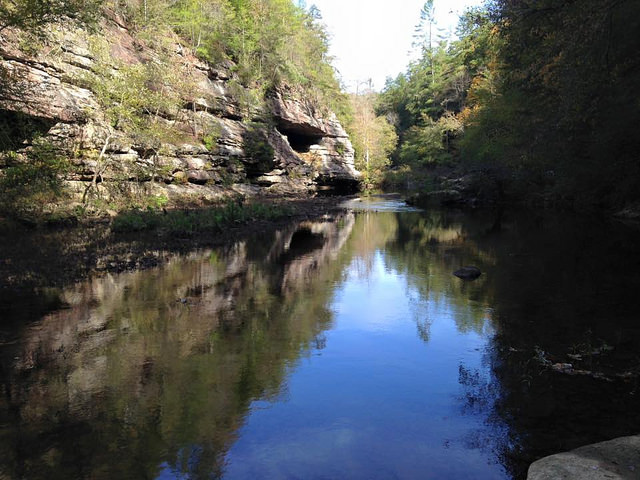
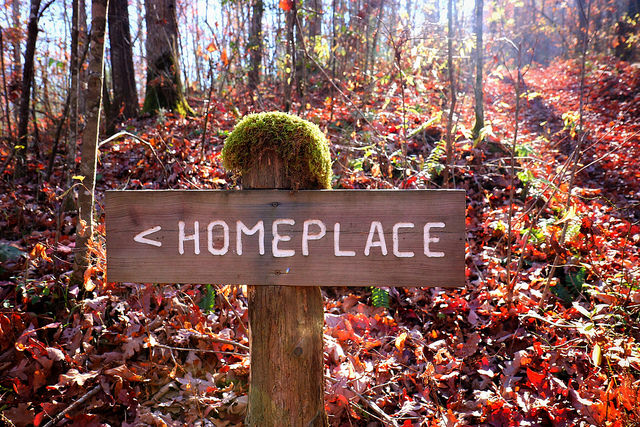
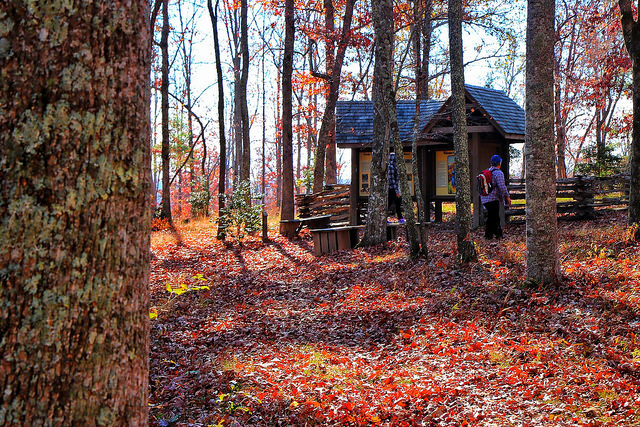
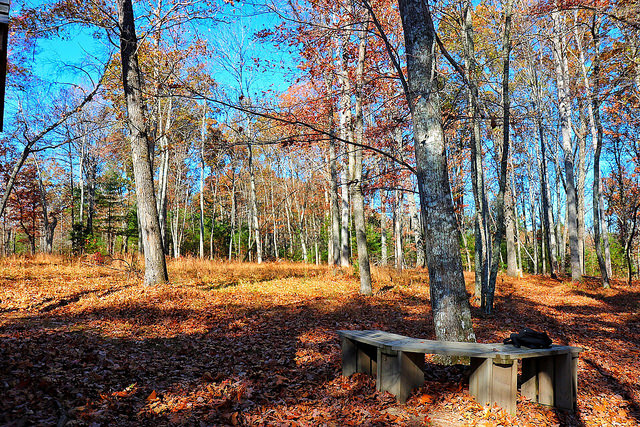
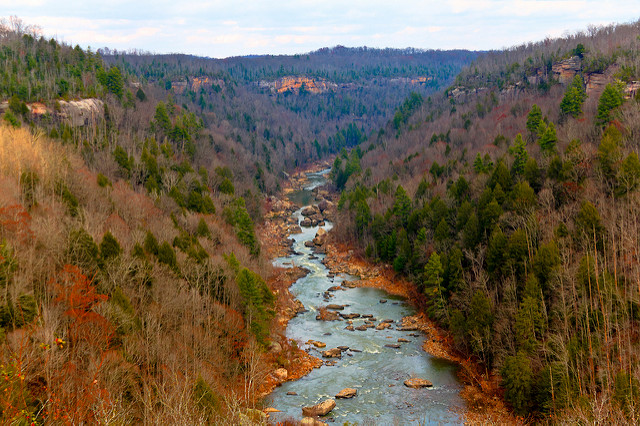
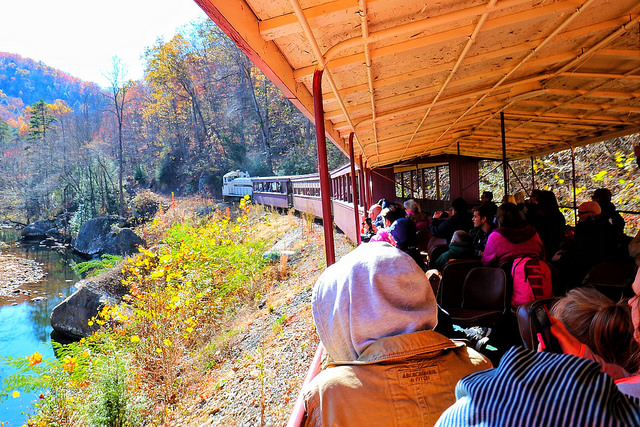

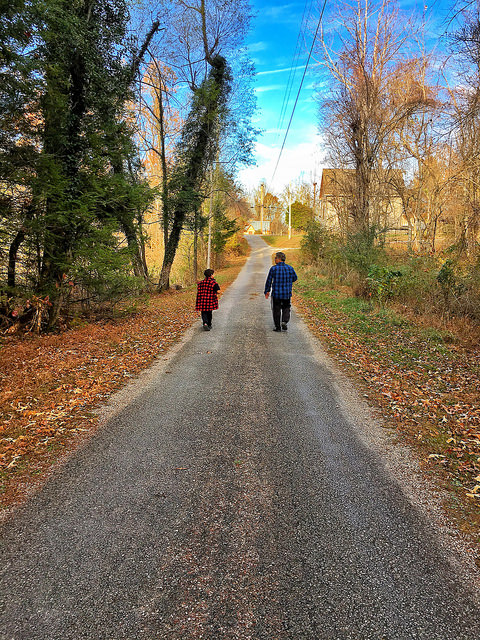
[…] haunted) Newbury House and if you time it right, you’ll have the entire place to yourselves. I wrote a post with everything you need to know about Rugby— You owe it to yourself to visit at least once. (We’ve been three times!) And while […]
[…] haunted) Newbury House and if you time it right, you’ll have the entire place to yourselves. I wrote a post with everything you need to know about Rugby— You owe it to yourself to visit at least once. (We’ve been three times!) And while […]
[…] Turns out – and I knew this – that if it’s not a weekend, there’s not a lot to see, for nothing’s open. And neither of us had phone service, I hadn’t thought to download any information, so all that was left for us to do was to wander around, look at some exteriors, observe all the British flags on display, and me to offer my vaguely remembered accounts of the utopian colonies’ foundation and brief existence. In case you are wondering: […]
[…] it operational. There were other setbacks. The well-meaning colonists made poor pioneers. It is reported that “A dairy failed. A sheep-raising endeavor failed. Pottery and brick-making efforts […]